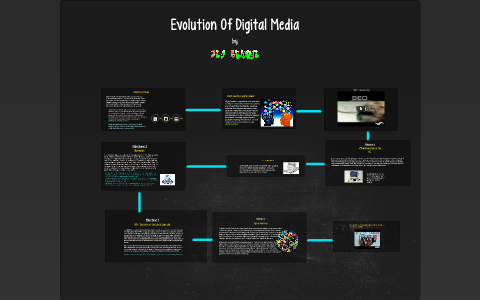Social Media vs. News Media: Who Controls the Narrative Now?
In 2025, we live in an era where narratives shape perception, and perception influences everything — from politics to culture to economics. At the center of this ongoing transformation are two powerful forces: social media and news media. Each has its own set of tools, audiences, and philosophies, but both compete for the same thing — control over the public narrative. The lines that once divided them have blurred, and the consequences are being felt in every corner of society.
Let’s take a deep dive into how these two mediums are shifting the balance of influence and who truly leads the conversation in today’s world.
The Old Guard: Traditional News Media
For decades, the news media was the undisputed gatekeeper of information. Newspapers, TV networks, and radio broadcasters held the responsibility — and power — to inform the public. They employed professional journalists trained in fact-checking, editorial standards, and ethical reporting. Viewers trusted them, even if they sometimes disagreed with the slant or bias.
However, as the internet became more accessible and mobile devices turned everyone into a content consumer, the news media began to lose its monopoly. The pace of reporting couldn’t match the real-time speed of online conversations. Traditional formats started to feel outdated. With shrinking audiences and declining ad revenue, many outlets either shut down or adapted their approach — often by mimicking the viral, fast-paced nature of social platforms.
The Rise of Social Media as the Modern Town Square
Social media was once dismissed as a place for memes, selfies, and status updates. But over the last decade, platforms like Facebook, Twitter (now X), TikTok, Instagram, and YouTube have become information powerhouses. They don’t just distribute content — they shape it. Today, an average user can post a photo or video, and within hours, it might be seen by millions around the globe.
This power shift has fundamentally restructured how information spreads. Unlike the centralized model of newsrooms, social media is decentralized. It favors immediacy and emotion over verification and nuance. It rewards bold claims and controversy with more reach. Anyone with a smartphone and a compelling story can now set the narrative.
Narrative Control in the Age of Virality
Controlling the narrative doesn’t necessarily mean controlling the facts. It means shaping what people pay attention to, how they interpret events, and what emotions they associate with them. This is where social media outshines traditional media in many ways.
Hashtags like #BlackLivesMatter, #MeToo, or #FreePalestine weren’t started by journalists — they were born on social media, propelled by users who wanted to amplify marginalized voices and globalize local issues. Eventually, news outlets followed the momentum.
The same can be seen in conflicts, protests, or even entertainment news. TikTok influencers and Instagram pages often break stories before CNN or BBC. A viral tweet can force a government response. A 30-second video clip can alter public opinion faster than a 30-minute news segment.
The Flip Side: Dangers of Decentralized Influence
Yet with this democratization of information comes a darker side. Social media is not built for accuracy — it’s built for engagement. Misinformation spreads rapidly. Conspiracy theories flourish. Deepfakes, edited clips, and out-of-context images mislead viewers who may not question the source.
Without gatekeeping, anyone — from trolls to state-sponsored actors — can inject false narratives into the conversation. In many ways, traditional news, for all its flaws, still maintains editorial standards that social platforms often ignore or enforce inconsistently.
The rise of “fake news” as a phrase and phenomenon has made audiences more skeptical of both forms of media. We now live in a world where truth is often filtered through personal bias, and narrative wins over nuance.
Who Has the Final Say?
So, who truly controls the narrative in 2025?
In reality, it’s no longer a matter of either-or. The answer lies in co-dependence. Social media sets the pace and tone of conversations, often amplifying voices that traditional media missed. News media still holds authority in deep-dive reporting, investigative journalism, and international credibility. One leads the charge; the other follows, interprets, and contextualizes.
But increasingly, audiences themselves are becoming curators of their own information worlds. Through likes, shares, follows, and comments, users customize their narrative bubbles. This phenomenon has made algorithmic bias one of the most powerful narrative tools in existence.
If your feed shows you only one side of an issue, that side becomes your reality. This, too, is a form of control — subtle but immense.
MakeBoth’s Role in the New Media Landscape
As a hybrid platform focused on social media, general news, and entertainment, MakeBoth sits at the intersection of these changes. It captures the real-time pulse of the internet while offering context, analysis, and spotlight features. The platform recognizes that today’s media consumer doesn’t want to choose between TikTok clips and investigative reports — they want both.
MakeBoth’s model embraces diverse content formats, from trending reels to long-form human stories, without relying solely on algorithms or corporate interests. In doing so, it gives space to authentic voices, real-time updates, and community-driven storytelling — a blend that modern audiences crave.
Final Thoughts
The battle between social media and news media isn’t a fight to the death — it’s a struggle for balance, integrity, and influence. Each has strengths and weaknesses. Each plays a role in shaping how we see the world.
In 2025, control over the narrative no longer lies in a single newsroom or app. It lies in the collective actions of users, creators, journalists, platforms, and the critical thinking we apply to what we read, watch, and share.




